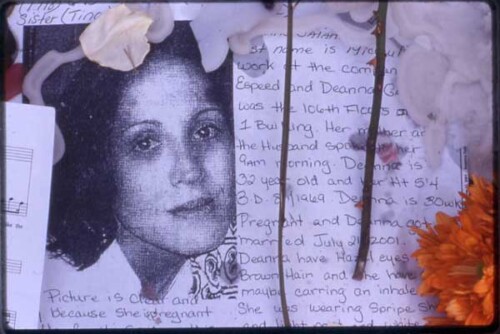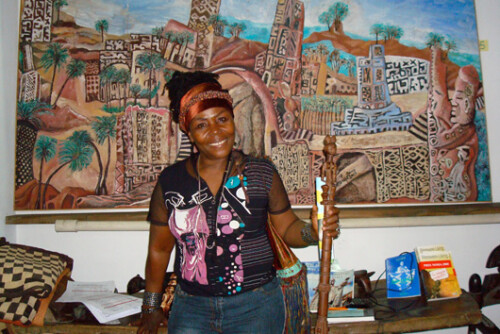The Defense of Public Sexuality Versus the Enforced Privatizing of Religion
In February 2013, Bart the Wever, the major of Antwerp and chairman of the Flemish nationalist party, spoke about restrictions homosexual city employees should abide to. He argued that for city desk officers forms of self-expression should be limited in order to protect the neutrality of the city and its public sphere. For homosexuals, this means that they cannot wear any clothing that expresses their sexual orientation, such as a T-shirt with a rainbow print on it (to my knowledge, this remained De Wever’s aspiration at the time, and was never turned into an official dictate). Unprecedented in Flemish public debates, De Wever drew parallels between expressions of sexual orientation and of religious identity, such as the Islamic headscarf. As a background, it is important to keep in mind that in 2003, the Belgian government legalized gay marriage, thereby publicly recognizing and legally institutionalizing two-coupled committed non-heterosexuality. Moreover, since 2007 Antwerp city desk officers have been forbidden to wear a headscarf. De Wever put it as such: “I do not want anyone at the city desks wearing a Rainbow T-shirt. Because a homosexual demonstrates through such symbols that he or she is committed to that obedience. And people do recognize that.”1
The journalistic coverage of De Wever’s remarks created an immediate stir among Flemish politicians, journalists and civil society actors and at media forums.2 Many worried about the equal rights of individuals with a non-heterosexual orientation. Also the parallel between expressions of religion and of sexual orientation evoked angry reactions. The notion of ‘obedience’ [in Dutch: obediëntie] is part of Catholic religious terminology, and refers to monastics who made vows to obey their prior. This parallel was felt to be completely misplaced. Liberal politician Alexander de Croo (Open VLD), for example, responded: “Is an expression of sexual orientation—even in official jobs—really an issue? Whom we love is a completely different issue than in which god we believe, isn’t it?” De Croo’s response reveals the often reiterated understanding of a fundamental distinction between religious identity and sexuality. The first is considered to be a conviction and world-view, which is constructed through socialization and can be as a ‘chosen’ identity either affirmed or renounced. The second, however, is perceived to be an intrinsic part of individual identity, which cannot be repressed or renounced, but needs to be confessed and practiced without restrictions to enable individual flourishing and happiness. De Wever’s suggestion to restrict city desk officers’ non-heterosexual self-expressions clearly went against the grains of public common sense and understandings about the relationships between religious identity, sexual identity, secularity, neutrality, and the public sphere. Non-heterosexual orientations are not perceived to be threatening the neutral public sphere, but are rather seen as in need of protection from discrimination in order to be enabled to flourish publicly. On the other hand, expressions of religious identity do continue to be perceived as threatening the dominant order of secular neutrality, and therefore need to be banned from official jobs and teaching in public education. The responses to De Wever’s point of view need to be situated in a context of Flemish policy-making at the level of municipal politics, public education, and the labor market that construct and ban the Islamic headscarf as the sartorial practice that opposes human flourishing, both of the female wearer—who must be oppressed by her community—as well as of her white, non-Muslim environment—who must be suffering its proselytizing force.
Interestingly, one and a half years later, in August 2014, an opinion piece was published by philosopher and religion teacher Mathias Balcaen at the mainstream news website Deredactie.be.3 In this opinion piece, he questions the dominant assumption that sexual identity is not a personal choice and should therefore be expressed freely and publicly, while religious identity is a personal choice and should therefore be kept private. Balcaen expresses the hope that as the free expression of non-heterosexual identity today seems to pose no problem for neutrality, the same will go in the near future for headscarf-wearing Muslim women in public office and as teachers. At the forum, his text generated a number of responses. Of these 28 responses, most aim at setting things straight by arguing that Balcaen got it entirely wrong with his understanding of sexuality, religion, and choice, and by reinforcing notions about what can be made public and what should remain or made private. Two notable exceptions are present. The first (Dennis) poses questions regarding the framing of religion as choice: “Forcing them [believers] [to accept the notion] that they choose their faith, makes no sense, in the same way as considering homosexuality to be choice. Denying Muslims or Christians the space to be faithful, based upon the argument that it is their choice, is as repulsive as forcing gays to hide their sexual nature [in Dutch: seksuele geaardheid].” The second posits that any definition of neutrality is subjective, contrary to the assumption that these definitions are objective. However, these two responses remain marginal next to the many others (including those in the controversy of February 2013) whose main stake was reinforcing perceptions about clear-cut differences between the foundation of various kinds of identity, and their subsequent belonging to public or private spheres.
The above exploration reveals that De Wever’s statement stood alone in considering sexual identity as a “commitment” that threatens the normative neutrality of public office. In a way, we could say that De Wever’s comments about sexuality are “queering” dominant notions regarding sexual identity. This is precisely where lies the controversiality of his construction of both religion and sexuality as opposed to the status quo of the secular neutral public sphere. He portrays non-heterosexuality as a conviction, a personal choice for belonging to a non-conformist community or subculture with its own political-social agenda. This potential radical difference of non-heterosexuality is immediately undone by the many responses that aim at domesticating sexuality as a subjective and individual issue that has nothing to do with a political agenda or envisioning society differently. The notion of queer identity as a radical political choice and belonging, however marginal, certainly does exist among LGBTQI communities in Flanders. But so far, it might feel as a too dangerous route to abandon traditional identity politics, as De Wever shows that such a discourse can be easily utilized to condemn expressions of non-heterosexuality in the public sphere and to oppose equal rights for LGBTQI persons.
The Need for Combining Postcolonial, Postsecular, and Queer Perspectives
To draw to a conclusion, I argue for the need of combining postcolonial, postsecular, and queer perspectives and critique in order to deepen our insights into the constructions of religion, secularity, and non-heterosexuality and the ways in which these constructs are co-constituted in West-European contexts. Why would studies of sexuality benefit from postcolonial and postsecular perspectives? First, feminist postcolonial critique has focused on the various effects of European colonialism and imperialism concerning constructions of gender, sexuality, religion, race/ethnicity, and culture. They have, for example, critiqued and deconstructed discourses that position religious-cultural minority traditions vis-à-vis the emancipation and freedom of women and LGBT’s. In Flemish public debates, the idea that religion is harmful for women and LGBT’s, which arguably emerges from a recent past experience with leftist and secularist struggles against the authority and omnipresence of Catholicism, is today often projected upon Muslim minorities. This projection, however, doesn’t remain uncontested, as the above exploration of responses to Femen demonstrates.
Postcolonial insights should be combined with the theoretical claim that sexual self-expression became a major basis of the so-called subjective turn that since the 1960s opposed all sorts of external authorities. This subjective turn is considered to be constitutive of processes of secularization and epistemological formations of the secular in Western Europe. Based on the responses to the aspirations of Antwerp major De Wever, one could say that the emphasis on individual sexual self-expression became central to understandings of the public sphere, while religious self-expression (especially if Islamic) in public spheres is denounced for the sake of secular neutrality. According to a number of postcolonial queer theorists, homosexuality arguably lost some of its initial radicality due to its domestication and assimilation into West-European publics and culture. They hold that forms of homonationalism have become a major force of exclusion and discrimination of religious minorities and sensibilities. Critically investigating the entanglements of race/ethnicity, religion, and sexuality enables us to see these discursive and material public-private shifts.
In short, bringing together postcolonial, postsecular and queer perspectives will be highly fruitful to deepen our understanding of various histories and contemporary trends of affirmation and exclusions in the European context. They provide the analytical instruments to take up a critical study of religion, secularity, and sexuality in Flanders and to grapple with a landscape that is characterized by specific concepts and affects, e.g. anti-Catholicism, Islamophobia, racism, nationalism, and secularism.
- “De Wever Verbiedt ‘Homo-Kledij’ achter Loket,” HLN, February 2, 2013. [↩]
- For reactions from politicians across the political spectrum, see “Politici over ‘Homokledij-Verbod’: Bart de Wever Gaat Te Ver in Beknotten van Vrijheden,” Knack, February 2, 2013. For the reaction of Ҫavaria, the Flemish LGBT umbrella organization, see Timothy Junes, “Cavaria en Het Roze Huis over Homo-T-shirt: Waar Trekken We de Grens van Expressie?” Zizo, February 2, 2013;
“Holebi- en Transgenderkoepel: ‘Bart de Wever Zet de Deur Open voor Misbruik,’” Knack, February 2, 2013. For discussions in mainstream and alternative leftist media: Wim Denolf, “‘Aan A Ziede da Nie’: De Neutrale Homo Is Terug,” Knack, February 3, 2013; Yves Desmet, “De Wever Maakt er een Sport van Fenomenen Die er niet Zijn te Problematiseren,” De Morgen, February 4, 2013; Barbara Moens, “De Wever Oogst Kritiek met Ban op Homo-T-Shirt,” De Tijd, February 2, 2013; Michael Onkelinx, “‘Homo-Kledij’ en de Conservatieve Maatschappij,” De Wereld Morgen, February 2, 2013; Orlando Verde, “Hoe Laat Is Het, Mi Corazón?”, Kifkif, February 6, 2013. [↩] - Mathias Balcaen, “Homo’s wel, moslima’s niet ? – Mathias Balcaen,” Redactie.be, August 25, 2014. [↩]




